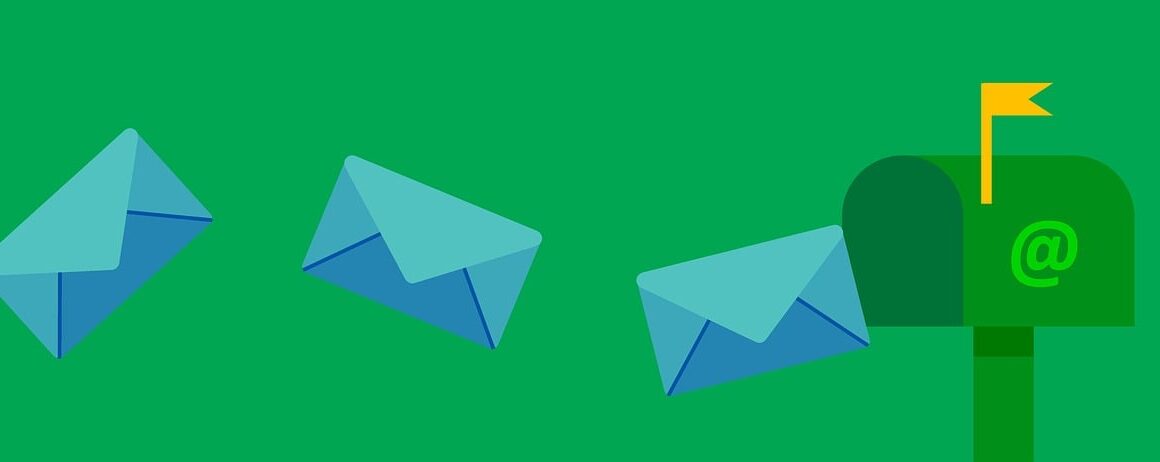Welcome Email Automation: Making a Great First Impression
Welcome email automation is a powerful tool that can enhance customer engagement and drive conversions. The first email after a subscriber signs up can set the tone for the entire relationship between your brand and the customer. This initial communication is crucial, as it is typically the first interaction subscribers have with your content, goals, and values. To maximize the effectiveness of your welcome emails, consider personalizing the content based on the subscriber’s preferences or previous interactions. By automating this process, you can ensure that each new subscriber receives timely and relevant information. Automated email workflows allow you to nurture subscribers effectively while saving you valuable time. Ensure that your welcome emails deliver clear value, making the importance of subscriber action evident from the start. Include compelling calls-to-action and highlight the benefits of being part of your community. This will help instill excitement and anticipation for future interactions with your brand. An effective welcome message is not just about providing information; it’s also about building a connection and trust with your subscribers that can last for years.
Design is another critical aspect of welcome email automation that should not be overlooked. Your email’s layout should be visually appealing and mobile-responsive, ensuring that it looks great on any device. Use a clean and organized design to present your message clearly without overwhelming the reader with excess information. This includes using bullet points, headings, and images to break up the text and guide subscribers through your content. The subject line and preview text are particularly important, as they will determine whether or not recipients open the email. A catchy but straightforward subject line can pique curiosity, while the preview text should accentuate the value offered within the email. Take the time to test different designs and layouts to see what resonates best with your audience. Recognizing that every brand’s target audience can differ, A/B testing can provide valuable insights into what styles and formats yield the highest engagement rates. Don’t shy away from making adjustments based on these results.
Timing is equally critical in welcome email automation. Sending your emails at the right moment can significantly influence subscriber engagement and conversion rates. Research indicates that welcome emails have higher open and click-through rates, so optimizing your send time can lead to better results. For best results, consider sending your welcome emails immediately after a user subscribes or shortly after. This helps maintain the excitement a visitor feels when they join your community. However, testing different timings can yield valuable insights into your audience’s behavior. Factors such as time zone, week part, and user preferences can all play essential roles in determining peak engagement times. Another point to consider is that follow-up emails can keep the momentum going. Sending a series of welcome emails rather than a single message can persuade new subscribers to engage with your content actively. Ensure your follow-up emails continue to provide value, nurturing the relationship and reinforcing the benefits of being part of your community.
Segmenting Your Audience
Segmentation is a powerful strategy in welcome email automation that can significantly boost engagement rates. By dividing your subscriber list into specific groups based on their interests, demographics, or behaviors, you can tailor your content to be more relevant and appealing. Automated welcome emails provide an excellent opportunity to collect data on new subscribers. This data can inform which segments they belong to, enabling you to craft personalized messages that cater to their needs. For example, if a user signs up for a fitness newsletter, sending them welcome content related to workout tips will resonate more with them than general content. In addition to segmenting based on initial sign-up preferences, continually optimizing your segments as you gather more data will consistently enhance your email marketing strategy. Analytics tools can offer insights into subscriber behavior, allowing you to refine the segments you market to over time. Personalized messages deliver a more engaging experience, ultimately fostering loyalty and encouraging conversions.
Content is king, even in automated emails. Crafting compelling content that resonates with your audience is crucial for driving engagement in your welcome emails. Start by clearly explaining what subscribers can expect from your emails and how often they will receive them. Providing value from the very first email can set the stage for a positive relationship. Consider sharing helpful resources, exclusive insights, or special offers tailored to your audience’s interests. Additionally, incorporating storytelling techniques can create emotional connections with your readers. Your brand’s unique story can help humanize your content and make your subscribers feel more invested. Remember to maintain consistent branding across your automated emails, reinforcing your voice, tone, and visual identity. In every email, clearly communicate the advantages of being part of your community while ensuring that your content remains informative. Engaging visuals, such as graphics or images, can enhance your emails and grab attention, so don’t hesitate to include them strategically as well.
Measuring Success
Ultimately, measuring the success of your welcome email automation is paramount for ongoing improvement. Metrics such as open rates, click-through rates, and conversion rates can provide valuable insights into how effective your emails are. Setting clear goals for each automated email campaign will guide your strategy and ensure that you have benchmarks to evaluate performance. Regularly monitor your analytics, which can help you understand subscriber behavior and identify trends that could inform future campaigns. Pay attention to how different segments respond, as this can offer guidance on how to further personalize your messages. Gathering feedback from your audience, such as surveys or direct responses, can also provide qualitative insights. Additionally, track website engagement following email opens to assess conversions effectively. Success in welcome email automation isn’t just about impressive statistics; it’s about creating lasting relationships with your subscribers. By making data-driven decisions based on analytics, you’ll be able to fine-tune your approach and continue enhancing the value provided to your audience.
In conclusion, welcome email automation represents a golden opportunity to make a fantastic first impression. By leveraging automated systems, businesses can streamline their outreach efforts, allowing for prompt responses to new subscribers. Focusing on personalization, timing, design, content, segmentation, and measurement are all vital components that play significant roles in achieving high-impact welcome emails. These emails can introduce new customers to products and services while establishing a strong relationship that thrives over time. Always remember that the goals of your welcome emails should extend beyond basic information sharing; they should build trust, engage the reader, and clearly communicate expectations. Integrating a robust welcome email strategy will not only enhance subscribers’ initial impressions but also pave the way for future marketing success. The impressions made in those first few moments can significantly impact long-term customer relationships. By investing time and resources into perfecting your welcome email automation, brands can enjoy a wealth of benefits and drive customer loyalty.
Best Practices for Implementing Automation
Incorporating best practices into your welcome email automation can enhance effectiveness and drive results. To begin with, always ensure that you practice list hygiene; only send welcome emails to those who have explicitly opted in. This reduces bounce rates and ensures compliance with regulations like GDPR. Additionally, consider integrating dynamic content which can change based on user behavior and preferences. This personalization greatly enhances user experience and encourages engagement. Further, optimize your emails for mobile devices, as many users will first encounter your emails on their smartphones. Formatting your content accordingly helps keep the user experience seamless. Testing different elements, from subject lines to images, is also crucial for measuring effectiveness and finding out what works best. Implement a solid plan for collecting data so you can track performance metrics over time. Remember that automation is not a one-and-done task; continually refine your approach as you gather insights. Keeping an eye on industry trends and evolving subscriber behaviors will ensure that your welcome email strategies remain relevant and engaging.


